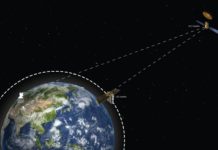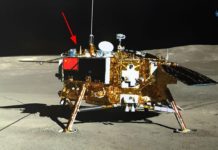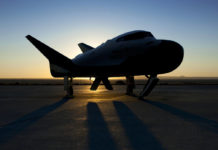The 8 Main objections to choosing Titan as our second home and their rebuttals
- It’s far, it took 7 years for Cassini-Huygens to reach Titan. Yes, but with faster propulsion, in particular Nuclear Electric Propulsion, it should be possible to shorten the trip to 2 years, maybe even 1 year. Here, I recommend people follow closely Ad Astra’s efforts with their VASIMR engine, the most advanced form of plasma propulsion nearing completion to date, and the Kilopower Project by NASA for the electricity power generation.
- It’s dark. Yes, but not too dark, like a few minutes after sunset on Earth. “That makes it around 100 lux, that’s for the equator with the sun at noon, so 1000 times brighter than a full moon, equivalent to a dark overcast day or the lighting in a family living room at night.”, says Robert Walker in his essay Value Of Titan As Base For Humans In Saturn System – Surprisingly – Once There – Easier For Settlement Than Mars Or The Moon. Not too bad, especially as it seems that On Saturn’s Moon Titan, Twilight Outshines Daylight, because “Titan’s atmosphere is both hazy and extends high up, at twilight, more light gets scattered onto Titan’s surface than it does during the daytime”. And it’s possible to concentrate sunlight using thin film mirrors, which are low mass so can be transported out there. Anyway, better to be able to live and walk on the surface of Titan with such levels of light, protected from the radiations by the thick atmosphere, rather than living underground or mostly indoor on Mars which has a very thin atmosphere letting the Galactic Cosmic Rays and solar energetic particles reach the surface. Anyone living on Titan would probably need to live in conditions of permanent artificial lighting, would be like living in Alaska in winter all year round. Interestingly, there’s enough light that reaches Saturn’s moon Titan to make Earth-type photosynthesis possible in theory says astrobiologist Dirk Schulze-Makuch.
- Gravity is too low. Yes, but as it’s similar to our Moon’s gravity, by studying its effect on the Moon we’ll learn how to best cope with low gravity. And in any case, we can think of building habitats or sleeping quarters in large enough centrifuge machines so as to recreate Earth gravity. Such machines won’t have to be that big as the human body seem to be able to stand quite high numbers of rotations per minute : watch this video of astronaut Tim Peak aboard the ISS spinning at about 60 rotations per minute, enough to have full gravity at his feet and head, for a couple of minutes, without any sign of nausea, only momentary dizziness when he stops.
- Energy is scarce. Not really, we could use for instance :
- the equivalent of hydropower, leveraging the elevated bodies of liquid methane. “Dams or waterwheels could generate power from hydrocarbons made liquid by Titan’s extremely low temperatures, but it could be difficult to get the liquid flowing as the largest lakes and seas are lower than surrounding terrain. The topography doesn’t make it impossible, it just makes it a very big engineering project to carve out a river that flows downhill out of the sea.” says Dr Hendrix.
- tidal power. A better option than traditional hydropower could be to put turbines in the seas because Saturn creates strong tides on Titan. Its largest sea, Kraken Mare, experiences up to a metre of tidal change each day. Those tides all flow through a narrow constriction separating the northern and southern parts of the sea, Seldon Fretum, or as it is nicknamed, the Throat of the Kraken.
- chemical energy. Hydrogen and acetylene can be extracted from Titan’s atmosphere and react together to produce energy. Also, according to Cassini data from 2008, Titan has hundreds of times more liquid hydrocarbons than all the known oil and natural gas reserves on Earth. These hydrocarbons rain from the sky and collect in vast deposits that form lakes and dunes. Though, as there isn’t easily accessible oxygen to combust these hydrocarbons, they can’t be used to produce energy. Oxygen could be extracted from the water ice Titan crust is made of, but it wouldn’t make economic sense as that process itself would require energy.
- solar power. It’s been estimated that supporting 300 million people would require a solar farm covering 10 percent of Titan.
- wind power. “As surface winds are slow we could use tethered blimp or balloon mounted windmills at a height of 3 km where the speed is 2 meters per second (4.4 miles per hour) or even better at 40 km where the wind speeds are 20 meters per second (44 miles per hour). These could generate hundreds of terrawatts). Wind turbines suspended in the atmosphere would be far easier on Titan than on Earth in the low gravity !” says Dr Hendrix.
- See Energy Options for Future Humans on Titan, June 2017
- It’s cold, at -180°C (-291°F) on average at the surface. Yes, but a thick enough suit would be enough to protect ourselves from the cold. Such a suit could be donned in minutes as opposed to hours for a spacesuit on Mars, because on Titan there wouldn’t be any need to pressurize the suit, contrary to Mars. Such a suit would also be much cheaper to use and would last much longer (existing spacesuits cost around 2 million USD each, and were predicted to be used for up to 25 spacewalks or EVA, Extra Vehicular Activity). Julian Nott, University of California, Santa Barbara, says “On what is currently known and inferred, there is little wind on Titan. Furthermore, gas conductivity falls sharply with temperature, so that simple trapped-gas insulation will work better than on Earth. With a surface area of 2 m2 and insulation 7.5 cm thick, heat loss should be about 150 W, which can be generated by light activity. Batteries to heat a visor and gloves would weigh little on Titan.” (fromTitan: A Distant But Enticing Destination for Human Visitors). We could also use aerogel to insulate ourselves on Titan. It’s the lightest solid material ever made by man, 99.98% air by volume. A new type of aerogel could be revolutionary thanks to its uncannyability to reduce heat transfer. Watch this video where inside a jacket temperature is 30°C and outside temperature is -196°C, so even colder than on Titan!
- It lacks metals for construction and manufacturing. “It might have less accessible metals than most places. But to start with, there is much less need for metals there, because we don’t need to build pressure vessels for the habitats. We can do a lot with plastic. ” says Robert Walker. So it’s certainly not a show-stopper, whatever little metals are needed can be imported from the Asteroid Belt thanks to ion thrusters (engine that move slowly but expends little propellant, so are much cheaper to operate).
- The water ice crust will make it impossible to build habitats : since they would be heated, they would make the surface crust melt. It’s not an issue in Antarctica. Or indeed if anyone has been camping in winter. Or Eskimos in igloos. And Titan is far colder. Canada also has many buildings built over permafrost.
- It will be hard for a rocket using retropropulsion to land on a body whose crust is made of water ice. It’s definitely not a show-stopper. “Ice does have a pretty high heat capacity. And it is a very low temperature on Titan so you have to raise it a lot more than on Earth” says Robert Walker. “Fairly little of the surface will be disturbed to begin with. The exhaust gas will be relatively tenuous, and it will disperse rapidly in vacuum, so it will only transfer a small amount of heat to the surface in the few seconds of landing.” says Russell Borogove. Tom Spilker, “Mission Architect” at Jet Propulsion Lab, says “The duration of the part of the landing burn with the plumes impinging on the surface would be short enough that the amount of melting would be small. If the landing legs did indeed stick to the mostly-ice surface material, a quick blast of electrical or chemical heating on the pads would release them.” And here is what planetary scientist Dr. Ralph Lorenz of the Applied Physics Lab at John Hopkins University had to say on the similar issue of thermal transfer on Titan between the Huygens lander and the thick and cold atmosphere: “Same problem Huygens confronted. At these low temperatures, radiation basically doesn’t transfer any heat at all. The atmosphere is sufficiently thick and cold that all of the outer surfaces of Huygens were quenched at about 94°K (-179°C), or maybe 96°K (-177°C), relatively quickly. Huygens had a 5 cm thick layer of foam insulation that basically limits the heat transfer. the interior was benign, room temperature freezing point, something like that, and outside was 94°K. So it was loosing 350W of heat to maintain that differential. Any long term system at Titan has to buffer that loss. The engineering solution is that you insulate.”
Next step for Titan colonization : let’s support the Dragonfly mission !
The Dragonfly mission is one of the last 2 finalists at the 2017 NASA’s New Frontiers Competition. Make sure to watch the intro video. The winning project will be selected by July 2019! Named for its insect shape, Dragonfly is a drone-like rotorcraft specifically designed to sample Titan’s atmosphere and surface. If selected by the NASA, it will launch by 2025 and arrive there in the 2030s. You can also read that related article : Physicist Hopes to Lead Drone Mission to Titan (March 2018).
Last, here is a useful resource for those of you who want to know more about Titan as a destination for Humans : Humans-to-Titan.org. Make sure to subscribe to its newsletter to keep up with Titan news, click here !







So your main argument for not landing on Mars was because we might contaminate the surface with extremophile microbes….
And your main argument for landing on Titan is that we can walk around on the surface. Presumably while spilling microbes around everywhere.
Consistency is important when reasoning.
This isn’t a convincing argument,just as the anti-Mars argument wasn’t.
You can’t base an entire argument on planetary protection and then follow up with a second article that doesn’t even mention contamination.
Hi, you’re a bit unfair with me, I mentioned on page 2, points 14 “Possibility to study potential Titan life without the risk of harming it as it would be very different from Earth life” Issue with Mars is that we have many ideas of surface habitats where Earth life could possibly survive and even metabolize, which is a very different situations from Titan where, because of the temperature, -179°C, life would necessary be very different and alien to us. So the risk of contamination isn’t the same at all, we’re talking of 2 different extremes here. See this article :”below -20 °C, single-celled organisms dehydrate, sending them into a vitrified – glass-like – state during which they are unable to complete their life cycle. The researchers propose that, since the organisms cannot reproduce below this temperature, -20 °C is the lowest temperature limit for life on Earth.
(see https://phys.org/news/2013-08-lowest-temperature-life.html#jCp)
Also, about back-contamination, “it may seems unlikely that life adjusted to Titan habitats could survive on Earth. The reasoning would be that any life that works at such low temperatures must use much faster reactions than our biochemistry (unless it lives at a glacial pace). So when you warm it up, it’s likely to self destruct.” says Robert Walker
Titan is currently categorized as “Provisional category II” with “only a remote chance that contamination from Earth could jeopardize future exploration”.
There category II is the same as our Moon. But it is provisional because they say that more research is needed.
“Titan would surely be studied robotically first. There are no serious proposals to send humans there right away, unlike Mars. So, unless there is some drive to send humans there quickly, we’d probably answer all those planetary protection questions already before we land humans there, just in the natural course of solar system exploration. If so, and if the results turn out favourable, it may well turn out to be one of the best place for a human colony outside of Earth. It would be a fun place to live in some ways, with the human powered flight, for instance, and the intriguing seas. And it might potentially be a biologists’ paradise if there is indeed native Titan life to study.”
Also, Phobos has significantly lower gravity than Titan, has the lowest altitude libration point in the solar system, meaning that landing there is significantly easier than Titan. Much easier to orbit and stationkeep too.
Additionally, Mars when viewed from Phobos fills the entire sky. the great view from Titan doesn’t stand up to scrutiny either.
If anything, Phobos then Mars is the best route (Lockheed Martin agrees).
Also, just remind us, how long does it take to get to Titan? That’s quite an important point. Surprised it wasn’t addressed in more detail.
3 or 4 years to Titan is better than 9 months to Mars?
I said it was the easiest body to land on…out of the 10 largest bodies with a surface in our Solar System, so not considering Phobos here.
Defining what’s best is subjective anyway, depends on the criterias. Phobos has no atmosphere so people wuld be exposed to harmful solar and galactic radiations, unlike on Titan, that’s a major issue.
Distance IS the major issue, I made it clear : age 2? point 13 : “It’s arguably the cheapest place beyond Earth to build a settlement…Leaving aside the cost of getting there, which, true, is not small. Titan will be cheaper than anywhere else thanks to the thick atmosphere and not having to pressurize habitats, same for suits to wear to go outside.”
Mentioned distance again in the list of objections page 3 : “It’s far, it took 7 years for Cassini-Huygens to reach Titan. Yes, but with faster propulsion, in particular Nuclear Electric Propulsion, it should be possible to shorten the trip to 2 years, maybe even 1 year. Here, I recommend people follow closely Ad Astra’s efforts with their VASIMR engine, the most advanced form of plasma propulsion nearing completion to date, and the Kilopower Project by NASA for the electricity power generation.”
Anyway, true, we’re doing very long term thinking here 😉 but the outer solar system and even any Earth-MArs economy will only flourish once we have Nuclear Electric Propulsion, and when we do, Titan will become accessible.
Another objection one could make : what is it with that “planetery chauvinism” as Car Sagan put it ? That is why that obsession with colonizing celestial body when we can make our own freespace colony using matter from the asteroids belt, there’s enough matter there to create thousands of times the surface area of the Earth in habitable space in freespace, in huge rotating stations where to reproduce our gravity, climate, atmospheric pressure, powered with the unlimited energy from the Sun, could be done close to Earth! you can Gerard O’Neill’s THe High Frontier to know mroe about it ! 🙂
In the section — It will be hard for a rocket using retropropulsion to land on a body whose crust is made of water ice. — You quote Russel Borogove as saying, “Fairly little of the surface will be disturbed to begin with. The exhaust gas will be relatively tenuous, and it will disperse rapidly in vacuum, so it will only transfer a small amount of heat to the surface in the few seconds of landing.” While I cannot dispute this, does “dispersed rapidly in vacuum” even apply to Titan? It has an atmosphere that is 50% more dense than Earth, thus NOT a vacuum.
We saw how little dust was kicked up from the surface of the moon during the lunar landings, but that was for a very small craft designed to support two human lives for a few days at most. Assuming that any vehicles landing on Titan with the supplies needed for long-term habitation or colonization would be much heavier, this will require a longer and/or more intense retropropulsion burn than the LEM. Sure, NASA’s videos of the Huygens lander did not appear to show any issues, but it only had a mass of 852 pounds. This is far less than any craft that will be carrying enough supplies to support long term human life on Titan.
“The exhaust gas will be relatively tenuous, and it will disperse rapidly in vacuum”
But there is a dense nitrogen atmosphere?
Fix Earth first
Re: #1, Titan also is protected by Saturn’s Earth-comparable magnetosphere 95% of the time.